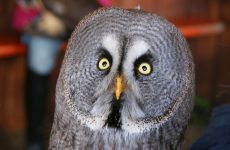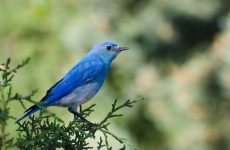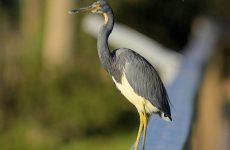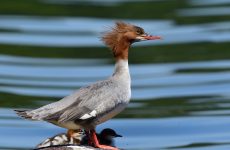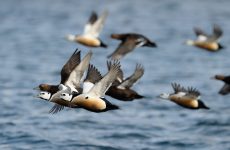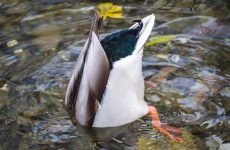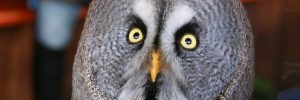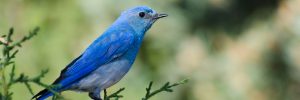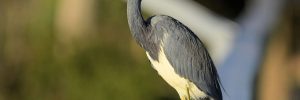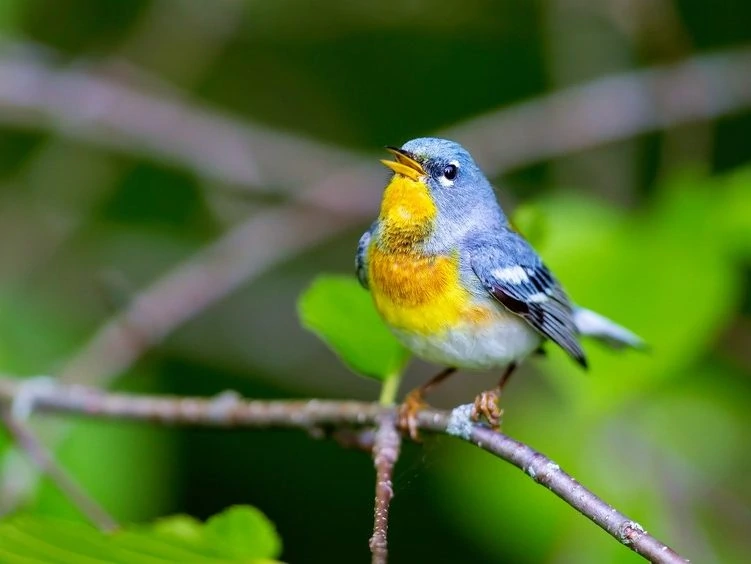
This guide will help you to identify 13 warblers by their song and will help you to understand how you can learn to recognize bird songs more easily with a few tips and tricks.
You will often hear warblers before you see them, and if you get to know a few of their songs, then it will be easier to identify the bird you see. Luckily some warblers sound more distinctive than others.
Warblers’ songs can be described as buzzy, clear, or a thrill and they may rise in pitch or fall, and they have several different sounds going on. Using these ways to describe bird song is the key to being able to learn and recognize them.
- A buzzy note sounds insect-like
- A clear note is like a whistle, and each note can be heard separately
- A thrill is so fast you can’t hear the individual notes
Next, listen to the pitch of the notes. Do they rise or fall or stay the same?
Lastly, listen to if the song is the same throughout, or is it made of different segments? For example, it may start with a buzz and then change to a trill?
Using these tips, you will soon be able to recognize not only warblers songs but many bird songs.
Warblers With Buzzy Songs
Black-throated Blue Warbler
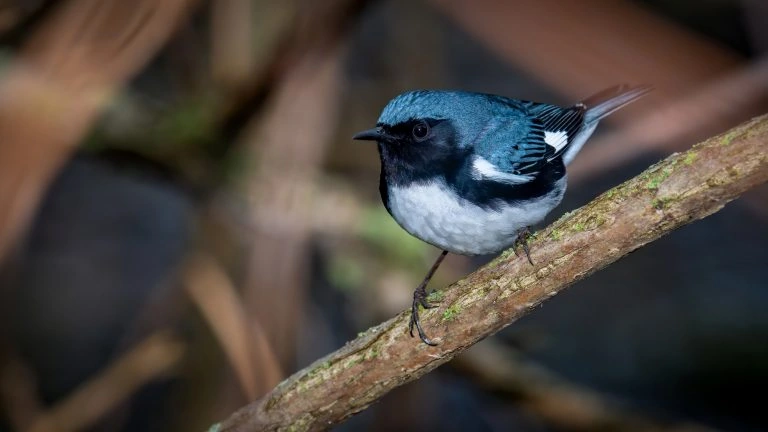
Black-throated Blue Warblers breed in northeastern US states and Canada. They can also be seen during migration over eastern US states before wintering in Central America and the Caribbean.
Black-throated Blue Warbler’s song is buzzy and may speed up and have a longer note at the end. It is often made up of around 5 notes.
Black-throated Green Warbler
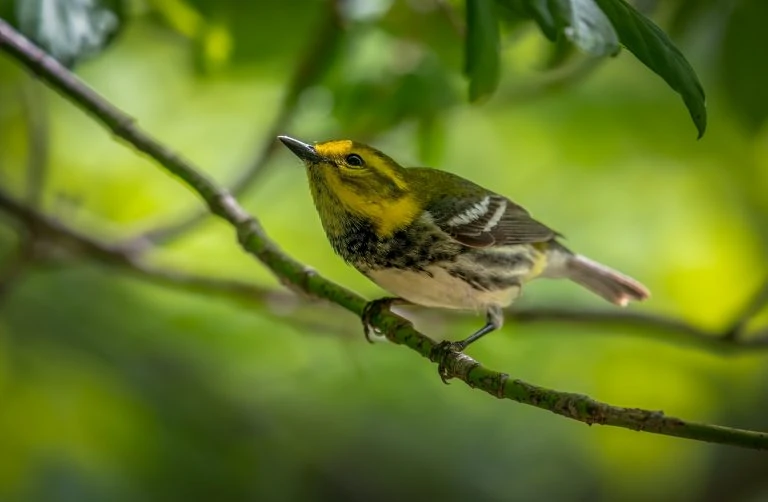
Black-throated Green Warblers can mostly be seen during their long migration over the eastern US up to their breeding grounds in northeastern US states and Canada. Their winter grounds are in Mexico, northern South America, and the Caribbean.
Black-throated Green Warbler’s song is also buzzy and also about 5 or six notes, with around 4 at the beginning being shorter and then changing in pitch at the end to longer buzzy notes, which may rise then fall.
Blackpoll Warbler
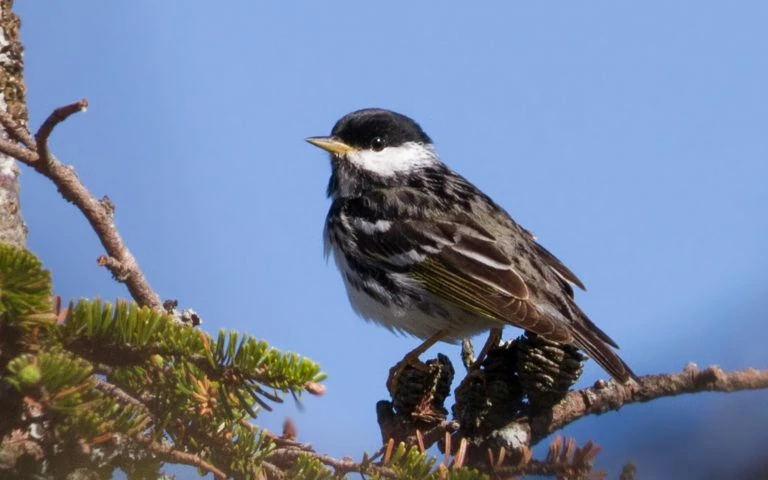
Blackpoll Warblers breed in Canada and can be seen during spring migration in the eastern United States. In fall, they migrate to their winter grounds in South America and the Caribbean.
Blackpoll Warblers’ song are so high-pitched that it may be difficult for some people to hear them. Their song is high-pitched, clear but fast, and buzzy. They sound like an insect.
Prairie Warbler
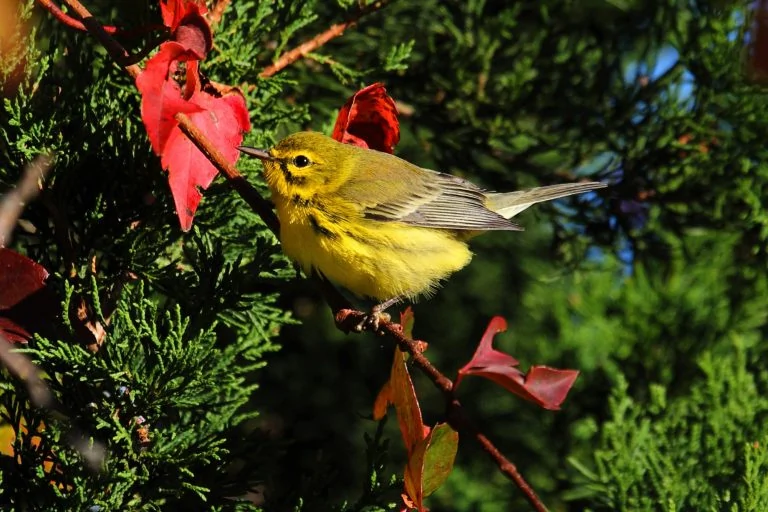
Prairie Warbler’s song is buzzy and rises in pitch
Palm Warbler
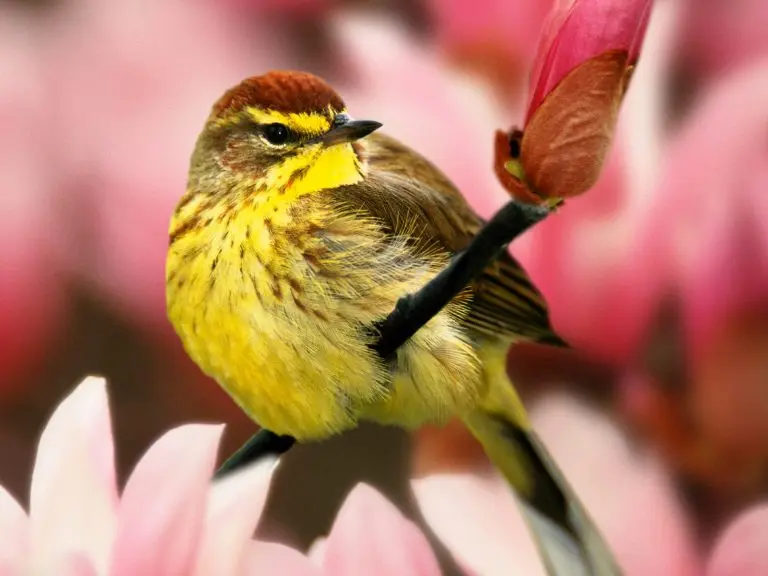
Palm Warblers breed predominantly in Canada and can be seen during migration in eastern US states. Some winter in Florida and along the southeastern coast.
Palm Warblers’ song is a constant buzzy note.
Warblers With Clear Songs
Common Yellowthroat
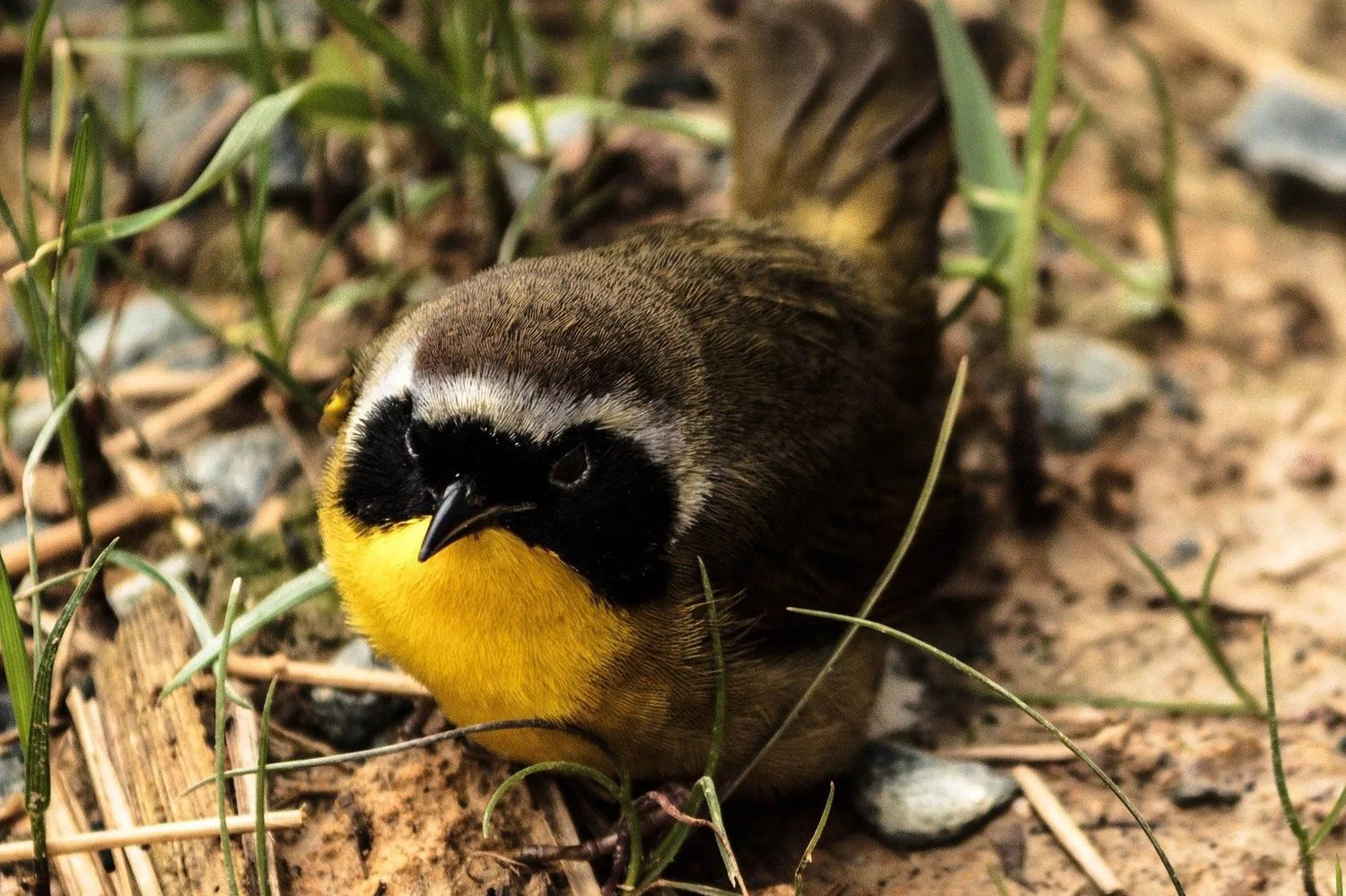
Common Yellowthroats spend the summer breeding over most of North America, except Alaska and northern Canada. Some remain all year along the Gulf Coast and Pacific Southwest. Then, they migrate south for winter.
Common Yellowthroats’ song is made up of a series of notes that rise and fall and is then repeated.
Hooded Warbler
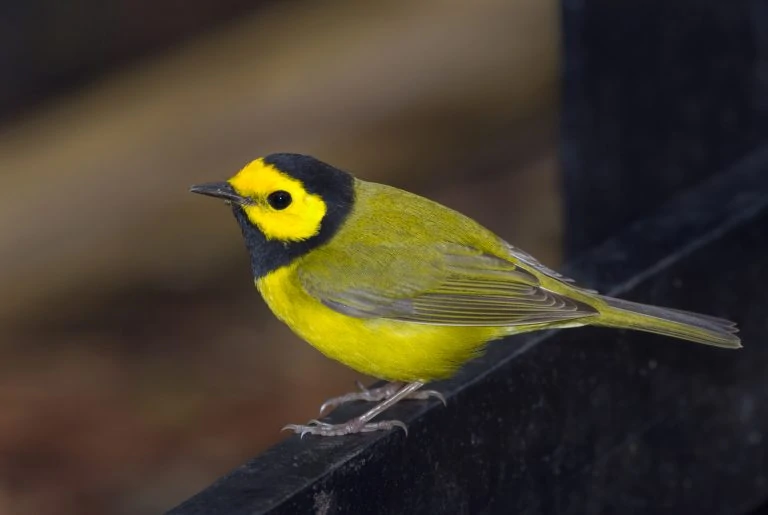
Hooded Warblers breed in eastern US states before heading south into Central America and the Caribbean for winter.
Hooded Warblers sing a series of clear notes that sound like d-weet, d-weet-d-weet – dee woo.
Yellow-rumped Warbler
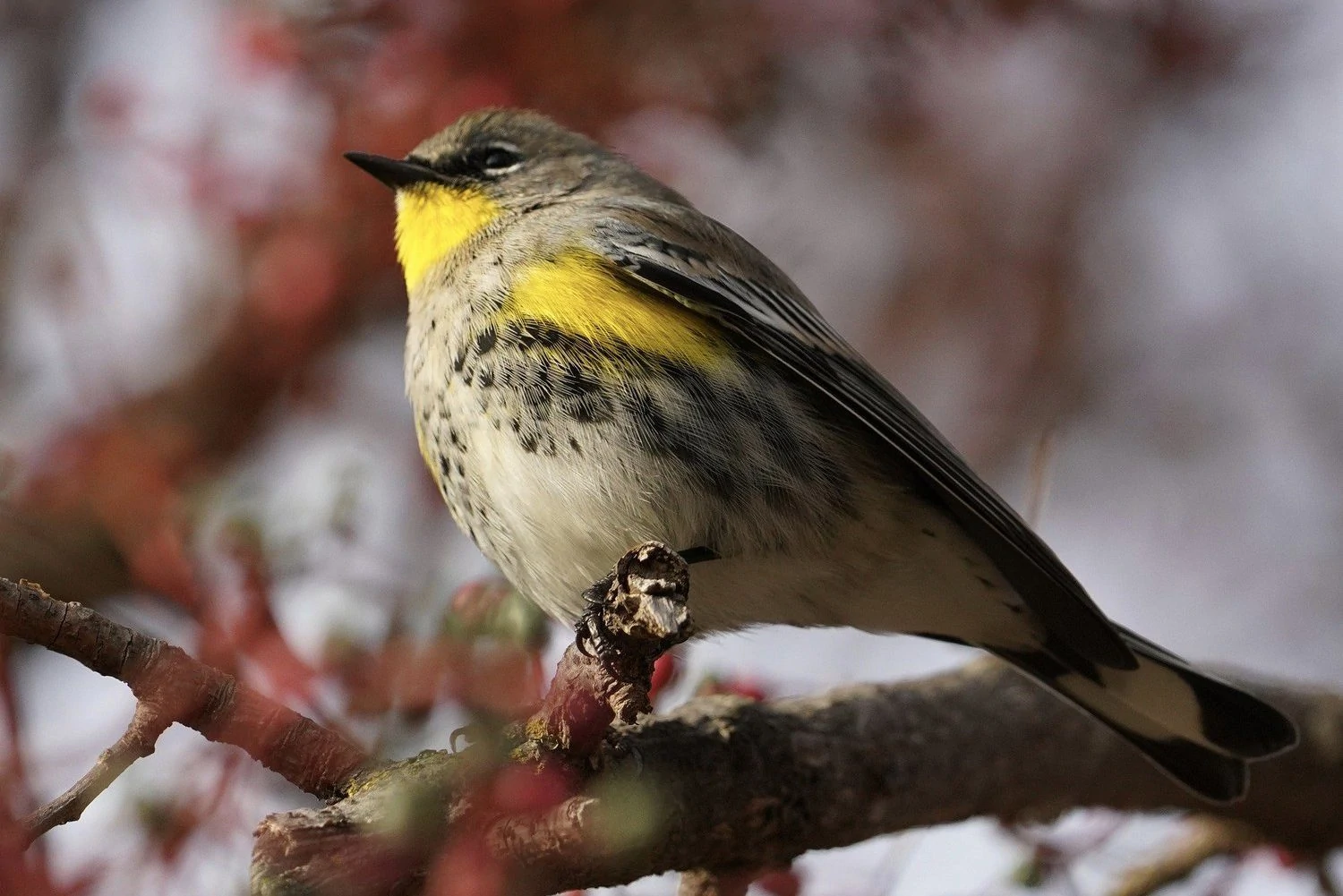
Yellow-rumped Warblers breed predominantly in Canada and parts of the Rockies and the Appalachian mountains.
During migration, they can be seen in the Midwest before overwintering in southern and southwestern US states and the Pacific Coast and into Mexico and Central America.
Yellow-rumped Warblers make a series of clear notes that fades out at the end.
Yellow Warbler
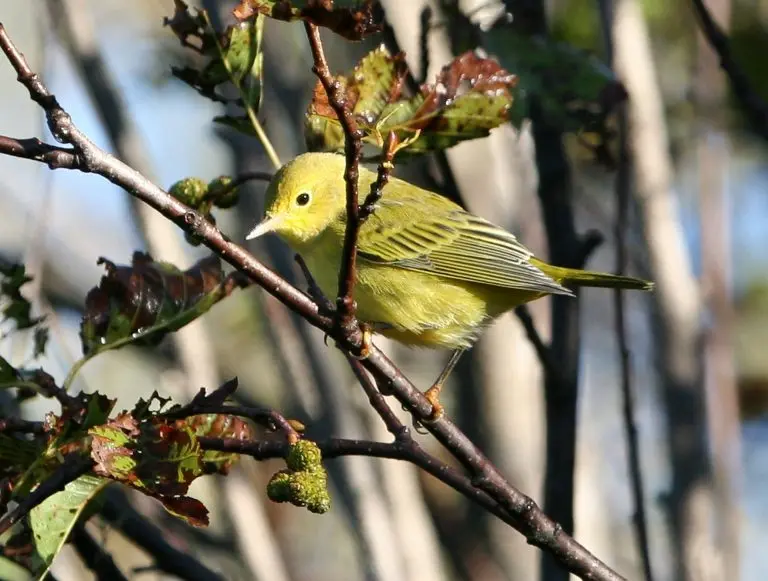
Yellow Warblers migrate a long distance to breed in Canada and the US, except for southeastern states, before heading back into Central and South America for winter. However, they can be seen during migration in southeastern US states.
Yellow Warblers’ song speeds up.
Chestnut-sided Warbler
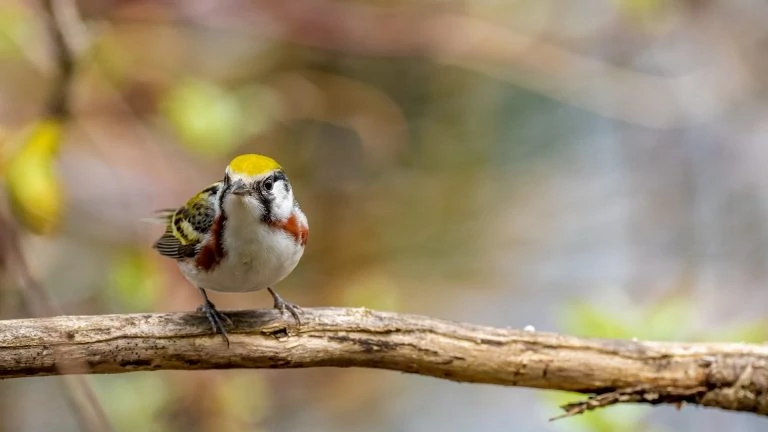
Chestnut-sided Warblers breed in northeastern US states and southeastern Canada and can also be seen during migration over eastern US states.
Chestnut-sided Warblers’ song is a series of clear falling notes that speeds up at the end.
Wilson’s Warbler
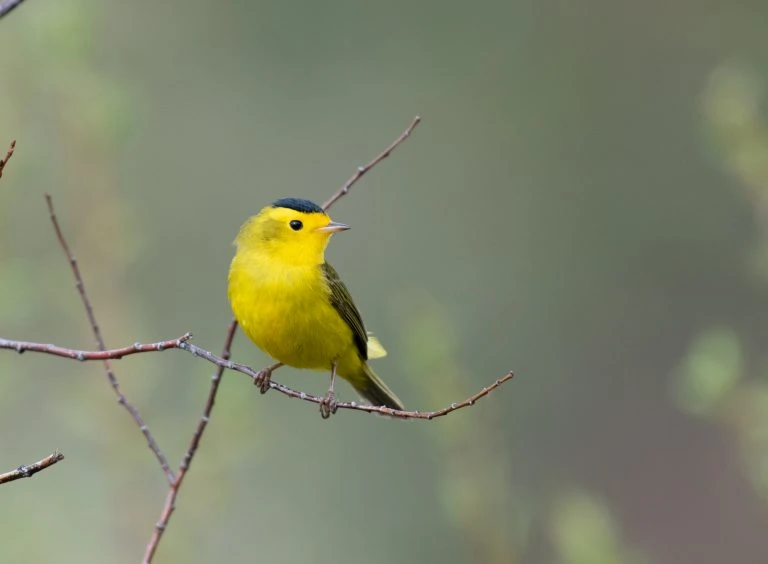
Wilson’s Warblers breed in Canada, Alaska, and northwestern US states but can also be seen across all US states during migration. They winter in Mexico and Central America.
Wilson’s Warblers is a series of clear falling notes that speed up.
Northern Parula

Northern Parulas breed in the eastern US states and southeastern Canada before heading to Central America and the Caribbean for winter. They may remain for winter in southern Florida.
Northern Parulas have a rising series of two notes that end with a trill followed by an end note.
Summary
Warblers with buzzy sounds:
- Black-throated Blue Warblers – Black-throated Blue Warbler’s song is buzzy and may speed up and have a longer note at the end. It is often made up of around 5 notes.
- Black-throated Green Warblers – Black-throated Green Warbler’s song is also buzzy and also about 5 or six notes, with around 4 at the beginning being shorter and then changing in pitch at the end to longer buzzy notes which may rise then fall.
- Blackpoll Warbler – Blackpoll Warblers song are so high pitched that it may be difficult for some people to hear them. Their song is high-pitched, clear but fast and buzzy. They sound like an insect.
- Prairie Warbler – Prairie Warbler’s song is buzzy and rises in pitch
- Palm Warbler – Palm Warblers’ song is a constant buzzy note
Warblers with Clear Sounds:
- Common Yellowthroat – Common Yellowthroats’ song is made up of a series of notes that rise and fall and is then repeated.
- Hooded Warbler – Hooded Warblers sing a series of clear notes that sound like d-weet, d-weet-d-weet – dee woo.
- Yellow-rumped Warbler – Yellow-rumped Warblers make a series of clear notes that fades out at the end.
- Yellow Warbler – Yellow Warblers’ song speeds up.
- Chestnut-sided Warbler – Chestnut-sided Warblers’ song is a series of clear falling notes that speeds up at the end.
- Wilson’s Warbler – Wilson’s Warblers is a series of clear falling notes that speed up.
- Northern Parula – Northern Parulas have a rising series of two notes that ends with a trill and then an end note.
I hope that this guide helps to learn some of the more easily identifiable warbler songs with that knowledge you can identify more warblers.

